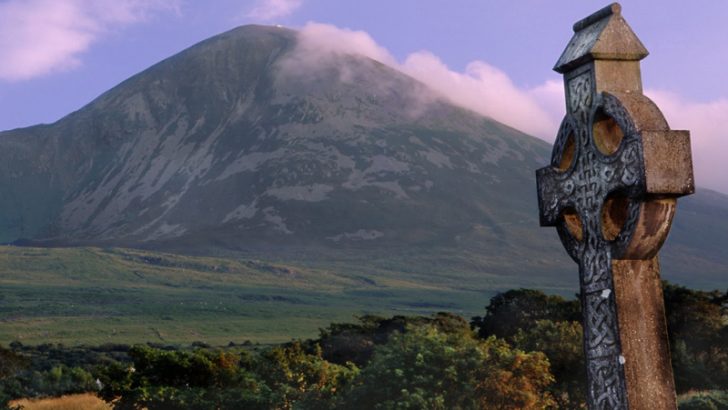Religion, Landscape & Settlement in Ireland, from Patrick to the Present
by Kevin Whelan (Four Courts Press, €45.00)
This book is one which will interest a wide range of readers. As it is already into a second printing it can be said to have scored a great success with many of them, and many more will doubtless read it in the months to come.
It may not perhaps please everyone in these days of ever narrower fields of study. It has been well remarked that experts dig ever deeper in the individual holes of research, and a different kind of writer is needed on the surface to see how what these scholars have discovered can be connected to provide an overall sweeping view, which is what most general readers and students of Irish culture long for.
Kevin Whelan is the well-known director of the University of Notre Dame Global Gateway in Dublin, an institution that caters largely for American students anxious to learn about Irish history, society and culture in just such a perspective.
If there is one adverse comment to make it is that the book starts with St Patrick. Irish culture cannot be understood except in the full 10,000-year range of the human occupation of this island. All the past cultures have left their mark, some on the landscape, some on the memory, some on social life. The 5th Century is very late in the date when culture, and the manifestation of religion (albeit from a Christian perspective – natural religion had already shaped what there was for the early Irish saints to work on).
Survey
Dr Whelan begins with a swift survey of the early medieval church, the Gaelic church assonated with the friars, and the splintered traditions that emerged from the reformation.
But as the book progresses it gets more and more interesting. The chapter on “death in the Irish landscape” is of immense interest, so too the chapter on “vernacular religion” in which there is a section on Biddy Early, a person who should interest every student of Irish culture. There is also a chapter on Irish rituals of death and mourning – which have changed more than may realise.
There is a detailed discussion of the Irish Protestant traditions, the social and political difference between northern Presbyterians and southern Anglicans being well brought out.
The chapter on the Catholic revival since the 1780s provides for Irish readers and foreign students alike a background to much of modern Irish literature, social life and politics.
The chapter in which Whelan compares and contrasts the religious dimensions of what we might call our two capitals, Belfast and Dublin, touches on topics such as Irish Catholics in the empire and the colonies which needs greater emphasis than the topic usually gets.
But eventually he has to treat the state of religion in both rural and urban Ireland, and here he rightly points to the development of new religions in the country.
Some Catholic parishes may seem superficially to be almost dead, yet an observant walker in the city will see that Chinese, Nigerian, Muslim and Sikh communities are thriving, though inconspicuously. Religion is very far from dead in Ireland; it has merely taken on new forms, new ideas, perhaps even new hopes.
Faith
A couple of adroit pages round out the story, but readers will realise that this story of how communities and Faith have developed, declined and changed is very much an ongoing one.
In an appendix there is a list of some 50 national maps relating to religion which will be of immense use to local historians and many others.
Aside from the actual footnotes to sources, the book also has a very full bibliography, drawing together the literature on the wide range of topics the book has addressed, albeit in a brief manner.
This book will inspire I think a great deal of reading, research, and travel in both city and country. And that will be a very good thing.
This is a book which can be warmly welcomed, whatever the specialists in their ever deepening holes may say.


 Peter Costello
Peter Costello
